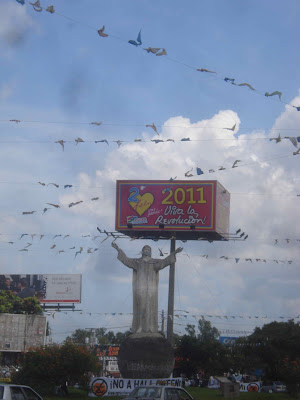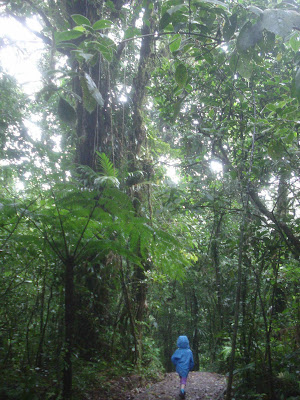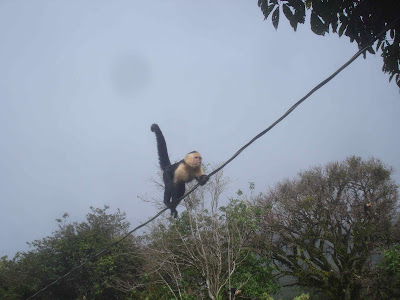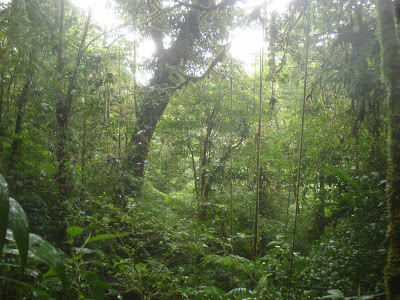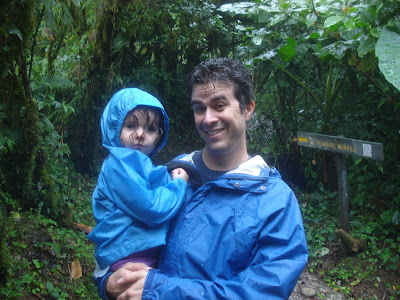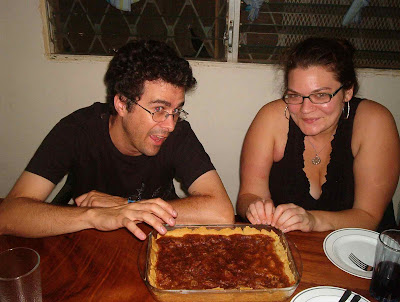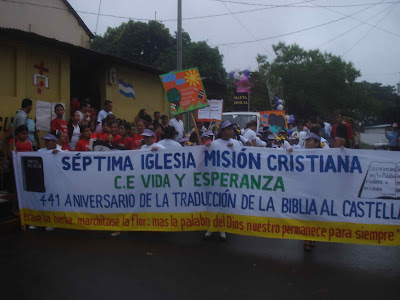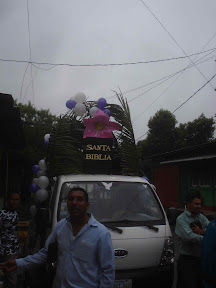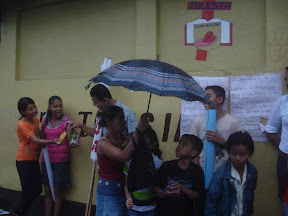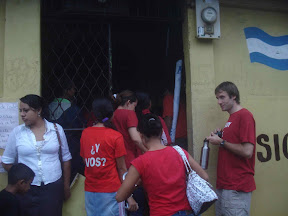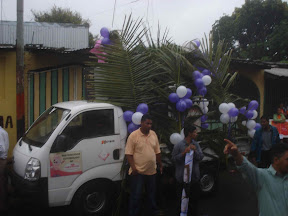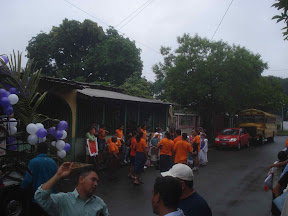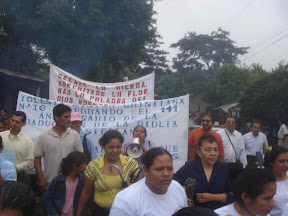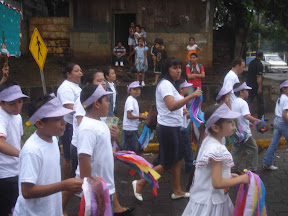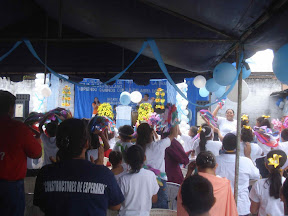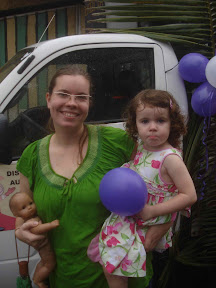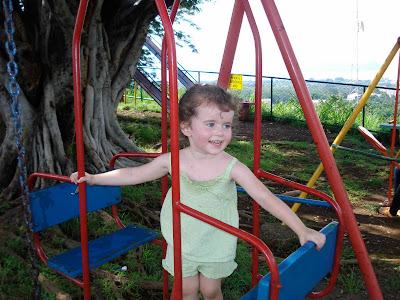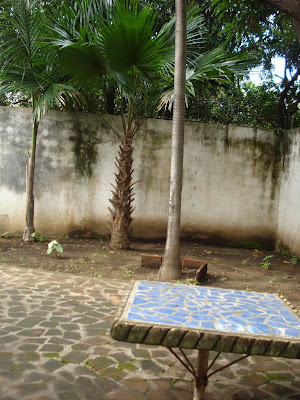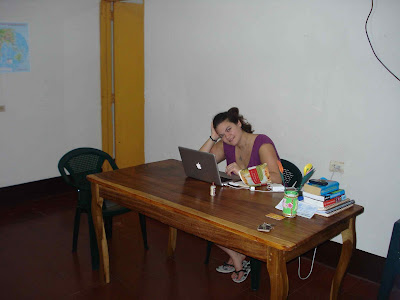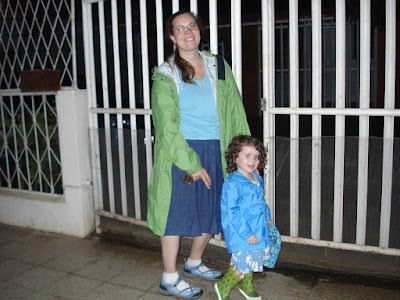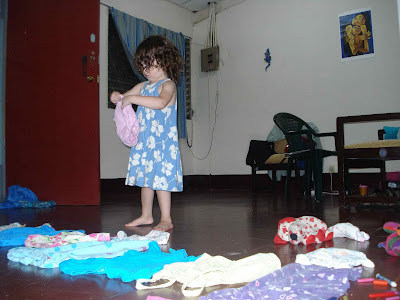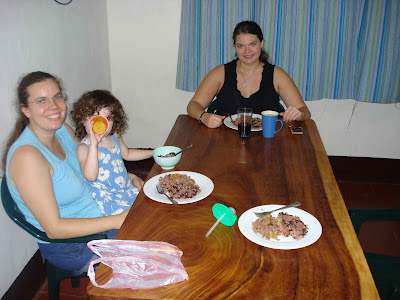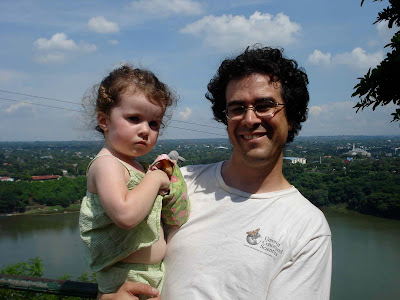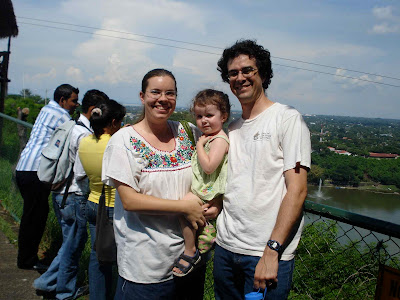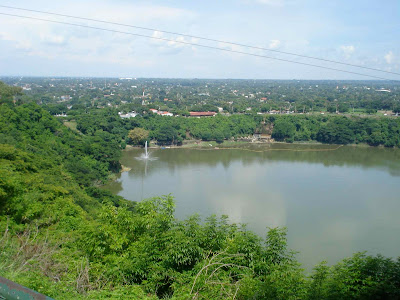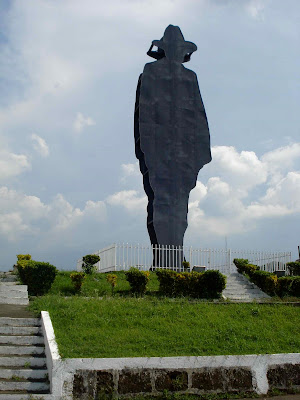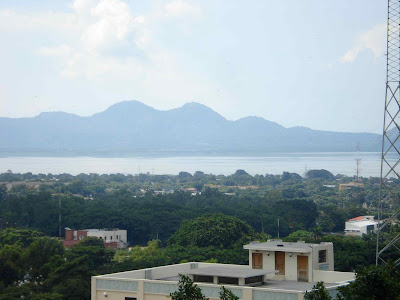
On Sunday we're heading home to the U.S. to spend a week with my parents in California. The plan is to spend Christmas here with the church, and then fly on the 26th to see family. At any rate, we've been in Nicaragua for four months and it seems to us that we've reached the end of the beginning. Our plan was to concentrate on language learning for the first few months and when we return in January our official jobs will swing to motion.
So now seems like a pretty good time to take stock of our situation (ps I stole this post idea from Kristine).
- We've all improved radically in our ability to speak and understand Spanish. But of course no matter how much we've improved it is a little daunting to think of how much more there is to learn. It's like we've climbed a long way up the side of a mountain and can see a beautiful view, but the top of the mountain is still lost in the clouds. One thing about me is that I tend to be a hard on myself when I make a mistake (even though making mistakes is how you learn), so in addition to Spanish I am learning a little bit of patience and resiliency.
- I have entirely lost any squeamishness I once had about smashing giant cockroaches.
- We have traveled around a big chunk of the country, visited dozens of churches and met some really amazing people. The hospitality and friendliness of the church members has been tremendous and humbling. We still feel a little overmuch like 'honored guests' when we visit churches and we're looking forward to actually beginning the work and being a little bit more useful.
- The culture shock we felt for the first few weeks has gradually faded into normalcy. Different foods, different furniture, different music, different modes of interaction, the constant stream of street vendors by our door, trash dumped in the streets and later burned, broken sewage pipes, the lack of hot water, crazy taxi drivers, the churn and chaos of Managua -- these are all little things by themselves, but when we first arrived they added up to a lot. Little by little all these things have come to seem (sort of) normal. (Although I'm still amazed when I see an entire family of 4 or 5 perched on a motorcycle, often with a small infant wedged in there somehow.)
It also helps that our house is now mostly set up. We have tables and stuff to sit on and bookshelves and a TV that gets 3 fuzzy channels and reliable internet. We have a car (a tremendous privilege in a poor country, and hence also a responsibility) so we don't have to rely on taxis for all our chores. Supposedly a big burst of reverse culture shock is awaiting us when we get back to the states... we shall see!
- Fresh tortillas brought daily to our door are pretty awesome. Also fresh produce, fireworks, pirated videos, shoe and electronics repairmen, and almost anything you might want seems to pass by at least weekly.
- We are very thankful that Quinn seems to be thriving and happy and well-adjusted. Just this week she seemed to take a big jump forward in her Spanish skills which is exciting to watch take hold.
- Nicaragua is a beautiful country -- the land of lakes and volcanoes -- and we've been lucky enough to see some of it. We've visited at least part of the neo-tropical rain forests of the north and east, as well as the dryer parts of the west (which reminded me strongly of central California). We've driven to the lip of an active volcano and hung out in the colonial cities of Granada and León. And we've hit the beach!
*/*
El domingo vamos a los EE.UU para pasar una semana con mis padres en California. El plan es celebrar la Navidad aqui con la Misión y luego volar el 26 a visitar la familia. De todas maneras, hemos estado en Nicaragua por cuatro meses y nos parece llegamos el final del principio. Nuestro plan era concentrarnos en aprender la lengua por los primeros meses y cuando regresemos en Enero nuestros trabajos oficiales van a comenzar.
Así que, ahora es un buen momento para reflexionar en nuestra situación (ps le robé esta idea de Kristine).
- Todos de nosotros hemos mejorado mucho en nuestra habilidad de hablar y entender Español. Por supuesto la cantidad de Español que todavía tenemos que aprender es inmensa. Es como hemos subido un gran distancia hacia el pico de la montaña y podemos mirar una vista linda, pero el pico todavía esta arriba en las nubes. Una cosa sobre yo es que estoy duro a mi mismo cuando cometa un error (aunque cometiendo errores es la manera de aprender), así ademas de aprender Español estoy aprendiendo un poco de paciencia y resistencia.
- He perdido cualquier remilgo que tuve sobre aplastar cucarachas gigantes
- Hemos viajado por gran parte del país, visitado docenas de iglesias y conocido mucha gente maravillosa. La hospitalidad y amistad de la gente ha sido enorme y humillante. Todavía nos sentimos un poco demasiado como "invitados de honor" y esperamos a empezar el trabajo y estar un poco más útil.
- El "choque cultural" que sentíamos durante las primeras semanas se ha desvanecido, poco a poco, a la normalidad. Comidas diferentes, muebles diferentes, música diferente, diferentes modos de interacción, el flujo constante de vendedores por la puerta, la basura botada en la calle y luego quemada, rotos tubos de aguas residuales, la falta de agua caliente, taxistas locos, la circulación y el caos de Managua -- en isolación cada uno era pequeño, pero cuando llegamos aqui, estas cosas sumaron a mucho. Poco a poco todo de estas cosas han llegado a parecer (casi) normal. (Aunque, todavía me sorprende cuando vea una familia entera de 4 o 5 encima de una motocicleta, a veces con un bebe pequeña.)
También es bueno que nuestra casa está preparada ahora. Contamos con mesas y sillas y libreros y un TV que recibe 3 canales borrosos y internet confiable. Tenemos un carro por lo no tenemos usar taxis por todo de los quehaceres. Supuestadamente, un "choque cultural inverso" nos espera cuando vayamos a los Estados... vamos a ver! - Las tortillas frescas que pasan diariamente frente de nuestra puerta son asombrosos. También los vegetales frescos, fuegos artificiales, videos piratas, reparadores de calzado y electrónica, y casi cualquier cosa es posible que desee va a pasar por lo menos una vez por semana.
- Agradecemos mucho que Quinn parece ser prospera, feliz y bien ajustado. Esta semana ella adelantó en su nivel de español, cual es emociante a ver.
- Nicaragua es un país hermoso -- la tierra de lagos y volcánes -- y hemos tenido suerte de ver algo de ella. Hemos visitado un poquito de los bosques humedos del norte y este, y también los partes secos del oeste (que me recordaba del centro de California). Hemos manejado a la orilla de un volcán activo y pasado tiempo en las ciudades coloniales de Granada y León. ¡Y también visitamos a la playa!






